23. THE TROUBLED 1970s

A DEEPENING CULTURAL SPLIT
CONTENTS
 The assault on the American family The assault on the American family
 Mainline Christianity in crisis Mainline Christianity in crisis
 The Federal Judiciary continues its The Federal Judiciary continues its
assault on Christianity
 An national ideological shift to the Left An national ideological shift to the Left
The textual material on this webpage is drawn directly from my work
America – The Covenant Nation © 2021, Volume Two, pages 252-263.
THE UNDERCUTTING OF THE CENTRAL ROLE
OF THE AMERICAN FAMILY |
|
The assault on the American family
It was not just in the realms of foreign policy,
national economics and presidential politics that America found itself
fractured, confused and at a great loss. At the very opposite end of
the social-political spectrum of American society, at the level of the
grass-roots American family, things were just as fractured and
confused. The divorce rate suddenly skyrocketed as spouses simply up
and abandoned marriages. The huge legal impediments traditionally
making divorce extremely difficult, and thus largely unthinkable, were
swept away as the "progressive" concept of "no fault divorce" spread
throughout the nation in the 1970s.
It was indicative of the shift away in
American culture from a focus on personal responsibility to a focus on
personal freedom instead. It was all very Boomer in spirit and logic,
although it certainly reached deeply into the professional classes as
well. Everyone loved their new freedoms. Or so it seemed at the time.
Boomer independent-mindedness had by then
degenerated into a crude narcissism, through such widely-supported
(among the Boomers at least) ideas as "do your own thing," or "look out
for Number One." Movies supported the notion that the individual (men
at first, women joining them in equal numbers later) who threw off the
numbing constraints of bourgeois marriage were the true heroes. Those
who continued to submit to the social expectations of a lifetime
commitment to a marriage were portrayed as truly either sad victims or
fools.
A very popular TV series of the 1970s,
All in the Family, made the "typical" American family the object of
intense ridicule. The Vet head of the household was depicted as the
perfect male chauvinist: stupid, arrogant and a huge bigot (by
supporting traditional social and moral values, exaggerated and
lampooned constantly by the program). The humble housewife was the
constant victim of the husband's chauvinism, though she possessed a
simple wisdom entirely lacking in the husband. Their Boomer daughter
and her husband were also flawed characters, though their flaws were
minor in comparison to those of the arrogant father and wimpish mother.
America laughed, not realizing how this aided in undermining the respectability of the one institution most sacred to the Vet
generation, and the key source of America's grass-roots democratic
empowerment since its founding centuries earlier, the American family.
Emphasis on profession rather than family
In keeping with this rising
Boomer ethic, the primary ideal of the young American contemplating the
future was not a family and a family-supporting job, but instead a
supposedly high-status "professional" career (though maybe some kind of
a family eventually). Young men no longer saw themselves as
breadwinners whose primary function was to work a job that could put
food on the family table. Instead, they were to look after the success
of their personal careers first and foremost. Marriage was merely an
afterthought, to be fitted around the all-important career that a young
man pursued. This of course was the complement to the idea that if
family got in the way of your personal destiny, you could always ditch
the family.
But it wasn't just young men who became infected with the
idea, though it seems that they were the first to really take off on
its logic. Women too began to look at their futures not as mothers or
wives, but as professionals.
In the early 1960s Betty Friedan had written something of an
Emancipation Proclamation for women, announcing in her book, The
Feminine Mystique, that life in the modern home was a stifling trap
for women. Women must break free from the inanities of housework and
seek their professional destinies outside of and well-beyond the home.
Her book quickly spread itself among Boomer college girls as if it were
a new Bible.
By the 1970s the feminist movement had not only an anti-marriage
quality to it but also a clear anti-male quality as well. Feminists
declared that women were also a minority group, comparable to the
Blacks who had suffered so much at the hands of the "Dead White Males"
who had too long dominated history. Men were dictators, oppressors,
chauvinists unworthy of female adoration or attention.
Not surprisingly, lesbianism soon grew apace with the fiercely
anti-male portion of the feminist movement (Friedan was at first a
strong opponent of this development, though she later reversed her
position and became a supporter of lesbianism). Because of this stream
of anti-male invective coming from the feminists, feminism made it
about as impossible for women to want to form a loving relationship
with a man as Nazi ideology during the Hitler years had made it
impossible for Aryan Germans to form a loving feeling for Jews. Such is
the power of unchallenged ideology.
For men there was no male equivalent of a Betty Friedan. There were no clear voices of what being a male was supposed
to mean in the new Boomer era. Meanwhile, the male character or
personality was chipped away at by feminists as if being male were
somehow a serious social problem (a rather common occurrence on
American college campuses, especially as America advanced through the
1980s). Just as women were now encouraged to develop the instincts of
the male warrior-hunter, men were supposed to prove their enlightenment
by assuming the feminine qualities of the nurturer. On college campuses
everywhere, sports programming for men was cut back in order to make
way for equal sports programming for women (required under Federal
Title Nine Act). And the military was now opened on something of an
equivalent basis for women, a clear demonstration that there was
nothing particularly unique in being a male (but also nothing
particularly unique in being a female).
For the men the sexual confusion was far greater. The female goal was
fairly straightforward: do what the men have long been doing, and do it
better than them. For men, despite the attempt to make men more
domestic (baby changing-stations in men's public bathrooms), such an
idea never really caught on. Mostly they lost sight of where, as men,
they ought to direct themselves. As the 1980s advanced, women soon
started outnumbering men within the college population, as more
highly-focused women pushed ahead in the quest of professional careers
rather than families.
The toppling of ancient sexual taboos
Indeed, social norms of any kind
became perceived as a form of tyranny to which Boomers felt that they
definitely should not have to submit. Whether or not sexual norms and
taboos were vital for the survival or even just health of a society was
not seriously considered by the Boomers, so automatically did they form
a natural antipathy to the very concept of taboo or social restriction.
Not surprisingly sexual behavior in other forms once held to be
well-outside the bounds of acceptable behavior also started to spread.
Voices soon were heard calling for the permissibility of man-boy
associations1 (offering in support of this idea the reminder that the Greek and Roman men both had
their boys to amuse themselves with). In this, the homosexual community
was getting a bit ahead of itself. In any case, acceptable or not,
adult sexual interest in youth (among others, by priests) seemed to
have grown sharply with the rise of the new culture.
1Probably
this is one taboo that no Boomer group or Gen-Xer group will be able to
topple – though there have already been quite a few surprises, so such
predictions are not very reliable
The widening generational
gap becomes the main theme of a very popular TV sit-com: All in the Family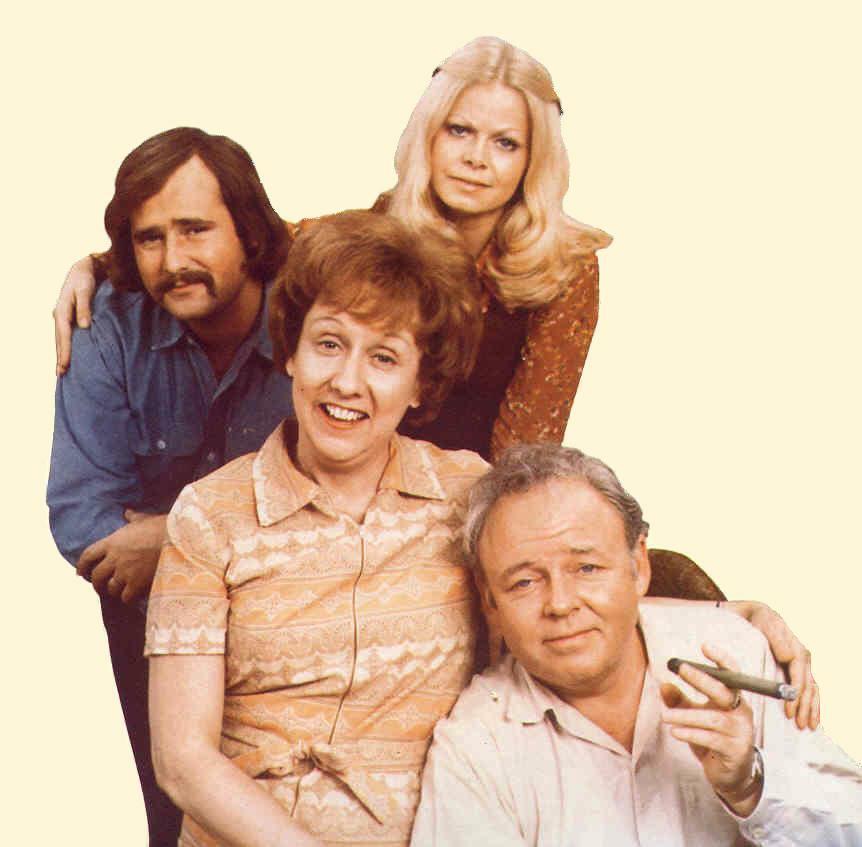
"All in the Family" – Norman
Lear Production – 1971-1978. Archie Bunker and his wife
Edith, daughter Gloria and son-in-Law Michael ("Meathead")
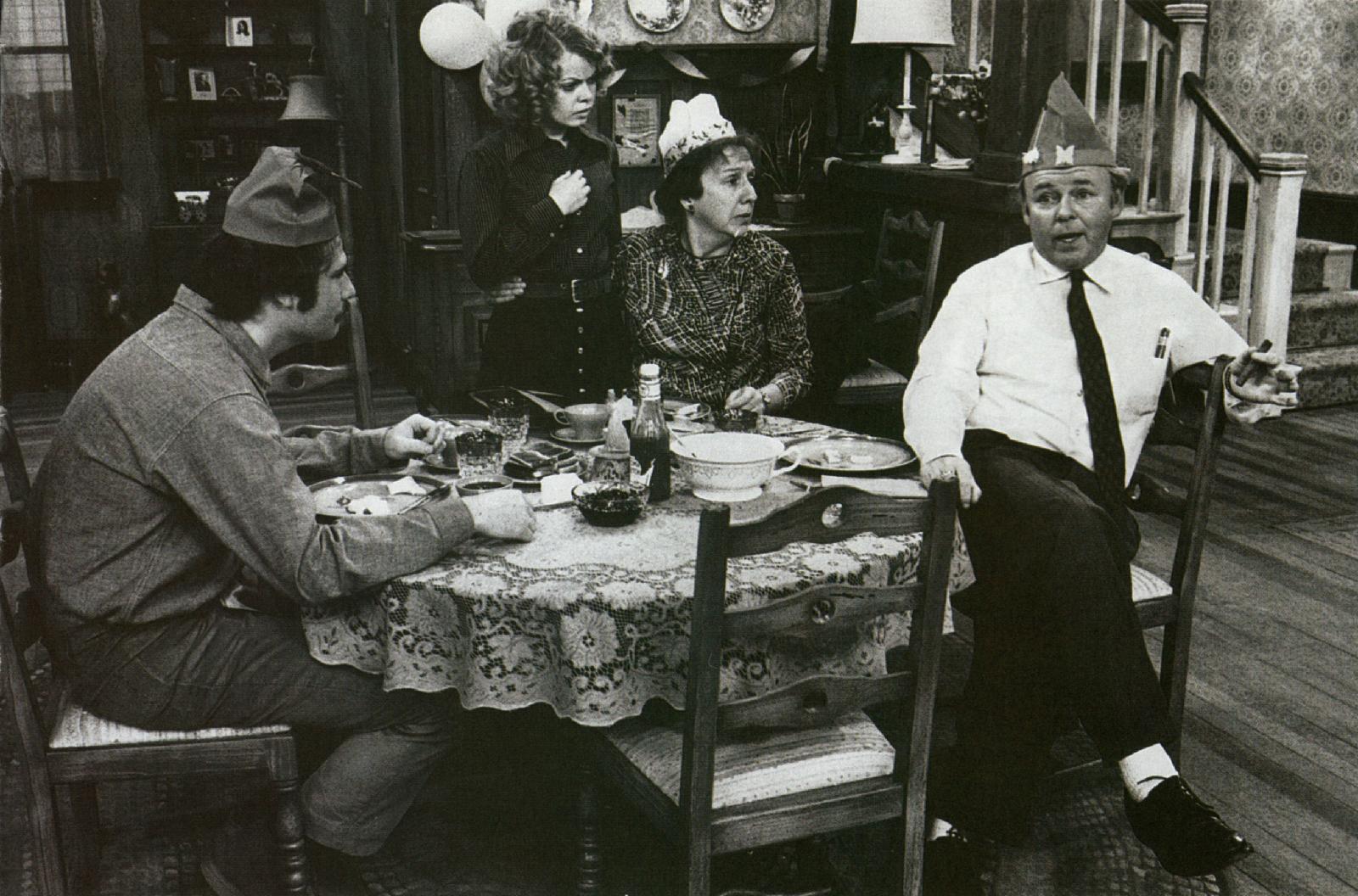
All
in the Family depicted the "White male head of the family" Archie as a smug idiot;
his wife Edith as compliant but somewhat wise; and the kids as typical Boomers
But certainly countering the Middle-America bashing of All in the Family was an alternate
TV program, Happy Days ... an equally popular program (running 1974-1984) which
romanticized the glory of Middle America's 1950s and early 1960s era
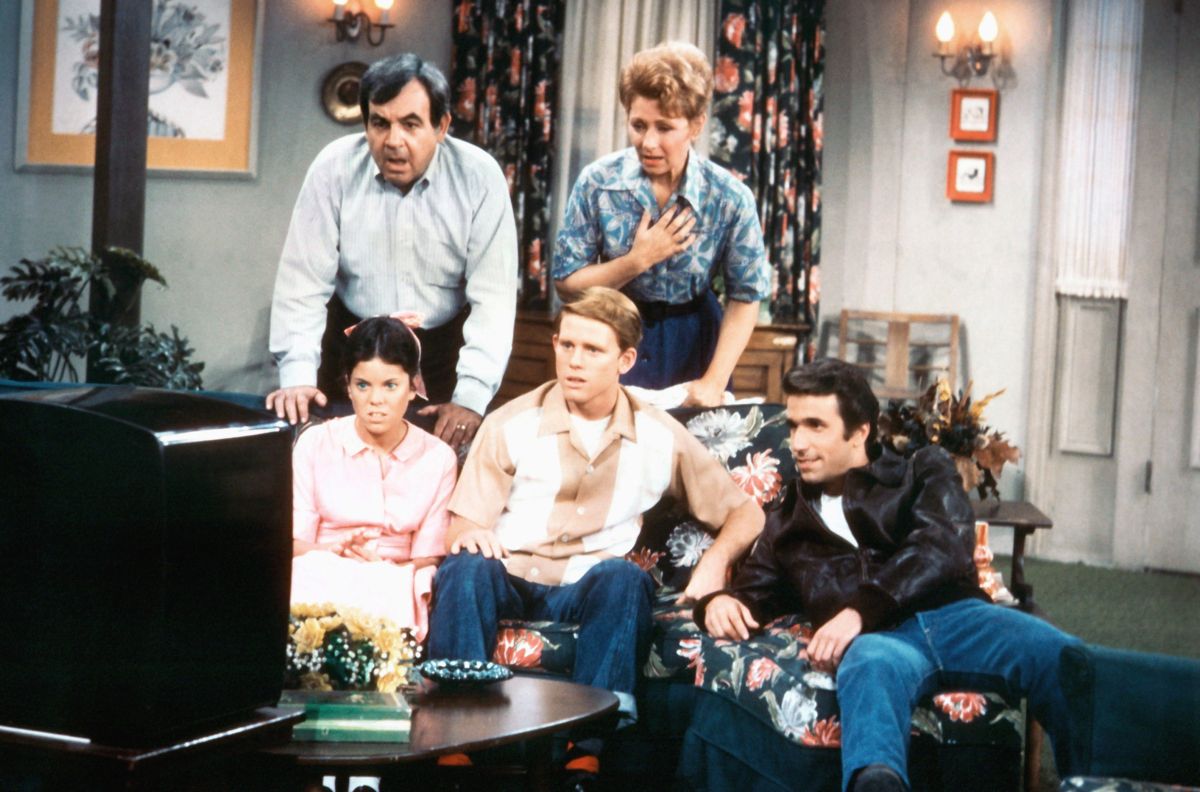
So ... which of the two got it right ... as far as American opinion went? Time would tell.
Equally quick to lampoon
American cultural and political life – though more balanced politically
(they even made fun of Democrats at that point!)
was Saturday Night Live
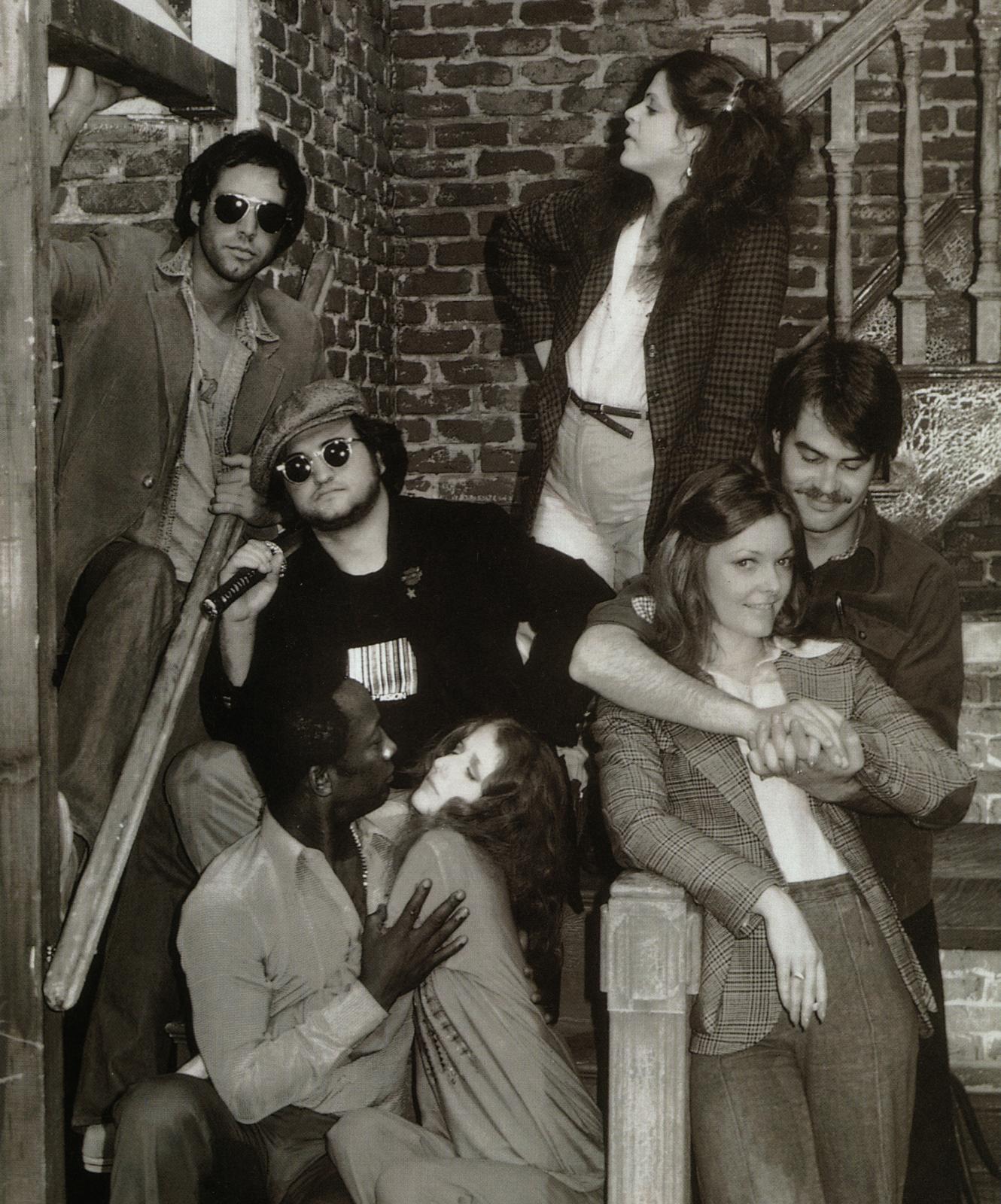
MAINLINE CHRISTIANITY IN CRISIS |
|
Christians supposedly had long understood the
dangers of embracing the culture of the larger surrounding society. The
Bible spoke clearly about the need to avoid such an embrace, both in
the Old Testament stories of Israel and its struggle with this issue,
and in the New Testament gospels and letters of the apostles,
especially those written by Paul, who constantly pointed out the grave
dangers of embracing "the ways of the world." New England, in fact, had
been founded by Puritans precisely to escape the dominant English
culture of the day and instead provide in America a way where they
could better live to such a Christian understanding, that is, live in
line with the precise teachings of Scripture on this matter. And the
various Christian Awakenings that had rolled across America from time
to time afterwards were built around the awareness of Covenant America
that it was time to repent of the sin of having gradually fallen back
into the embrace of the materialistic Secular-Humanist world by which
the Adversary (Satan) was trying to lead America away from its
Christian faith and the social-intellectual-spiritual disciplines that
accompanied that faith.
Now with the rise of Johnson's totally
Secular Great Society program in the mid-1960s, with its seductive
proposal of bringing America to perfection through the work of
enlightened government bureaucrats, from the point of view of many
Christians, the time had come for yet another "Great Awakening."
Of course, as in former times, the idea
of revival was not met with enthusiasm by all those who called
themselves Christian, which at the time was still the vast majority of
America's adult world. But in many cases, such Christianity was merely
the American civic religion of the day, based on regular attendance at
church and the celebration of key holidays such as Christmas and
Easter. And now more recently, being "faithful" in such religious
exercise, this large Christian section of America (mostly the Vets)
consequently did not see any particular need for spiritual revival.
The Evangelical, even "Charismatic," movement
On the other hand, one particular branch
of American Christianity – the Evangelical, Pentecostal or Charismatic
movement – demonstrated a growth reminiscent of the earlier Great
Awakenings, although on a much smaller scale. The chief characteristic
of this movement was the matter of how the Holy Spirit was once again
"gifting" the church with the classic powers of healing, prophesy, and
just miracles in general. There was no particular centering point, no
particular religious community or denomination that pushed this
development, but instead this development took place in various
individual ministries found in various Christian denominations. And it
took on all kinds of different forms.
Pentecostals emphasized the speaking in
tongues – unusual prayers and prophetic pronouncements spoken while a
person was under the influence of the Holy Spirit, uttered in a
"language" that required someone else to translate it into the English
language to the others present at the time. Pentecostals claimed that
it was such an event as the speaking in tongues that marked the
spiritual "rebirth" of a person.
Charismatics took up a view similar to the Pentecostals, although less
insistent that tongues be the absolutely necessary sign of such an
infilling by the Holy Spirit. Charismatics took a broader view that
Spiritual rebirth could come with other giftings or signs, especially
in the form of healings through prayer, but also in other areas such as
powerful preaching, teaching, even music ministry, especially music of
the more contemporary variety (guitars, electronic keyboards and drums
instead of just traditional pipe organs). The charismatic movement
eventually could be found in all the denominations, especially the
Assemblies of God, Methodists, Episcopalians, and, surprisingly enough,
the Roman Catholics (although Catholicism had a strong and quite
ancient medieval tradition of mystical teachers and writers of a
similar spirit).
Certain individuals and groups would loom
large in this movement, such the televangelist Oral Roberts with his
Oral Roberts University in Oklahoma, the musician and author John
Wimber and his Vineyard Church movement originating in California, the
Calvary Chapel movement founded by Chuck Smith, also in California, but
soon spreading in the form of hundreds of new churches across America.
Other denominations took a very strong
position against just such a development, absolutely insistent that
such spiritual gifts ceased with the end of the 1st century (thus those
holding to this view became termed as "Cessationists"), kicking
charismatics from their Christian fellowships in the belief that such
giftings were actually deceptions issued by Satan himself. The Baptists
in particular had a very hard time with the charismatics, claiming that
a true Christian had all that was necessary to live the true Christian
life in and through Biblical knowledge – and that alone. Any claim of
finding spiritual guidance beyond that was purely evil. Presbyterians
also tended to be resistant to the charismatic movement, although more
as a matter of style than theology, similar to the reaction of the Old
Siders and the Old Lights to earlier Awakenings.
Evangelical Christianity attempted to
bridge all these differences by accepting the spiritual giftings of
whatever variety God gave a person, and then putting those to work by
taking the power of the gospel to the larger world, to help bring the
world to Christ. In other words, extensive missionary work was
encouraged to be taken up by those whom God had gifted with the powers
of salvation (of whatever form).
Clearly by the 1970s Christian growth was
to be found mostly within this more active Charismatic-Evangelical
branch of Christianity – but sadly not at the rate that the older
denominations were slowly dying. These denominations were simply dying
at the same rate that their older members were themselves passing away.
Not much new blood was coming into these older churches.
Meanwhile, feminists saw new
opportunities to fill the professional ranks of the clergy of these
older denominations. But this too did not seem to have much of an
impact in terms of spurring new growth in those churches.
In this rising post-modern age, Christian
America was finding itself able to survive to some extent largely
because of the vitality of these less-orthodox, evangelical
movements. But clearly Christianity was losing its foundational
position in American society. Would the evangelical movement be
enough to save Christian America? Only time, and God's
intervention yet again (should he chose to do so), would give an answer
to that question.
THE FEDERAL JUDICIARY CONTINUES ITS ASSAULT ON CHRISTIANITY |
|
The Supreme Court meanwhile moved Humanism or
Secularism (two different labels for pretty much the same thing) to the
position of being America's official "non-religious" religion! In 1971
the Supreme Court finally took a stand completely on the side of
Secularism (in opposition to Christianity's former cultural-social
position) with respect to what could be taught to America's children in
American public schools. In the Lemon v. Kurtzman
decision of that year the Supreme Court declared that it was
unconstitutional to reimburse nonpublic schools (most of which were
Catholic) for the salaries of teachers who taught secular material in
these nonpublic schools, or even for the purchase of secular textbooks
and for secular instructional materials. Allowing support of even
non-religious educational programming in religious schools would
violate the First Amendment, which (according to a more "progressive"
Supreme Court) strictly forbids the state to get involved in the matter
of religion in any form, even if remote, or for religion to have a
place in the functioning of the state, which by this time had expanded
its jurisdiction to virtually every aspect of social life in America,
despite the very clear limitations placed on the federal or national
state by the 9th and 10th Amendments to the Constitution.
But the real impact of the decision was
in its clarification of what ideas and programs the state or government
could allow, and what must be disallowed, by conducting the so-called
"Lemon test." The government (national, state and local) could set laws
and guidelines for policies and programs on purely cultural matters.
However:
1. The government's action must have a legitimate secular
purpose;
2. The government's action must not have the primary effect
of either advancing or inhibiting religion;
3. The government's action must not result in an "excessive
entanglement" of the government and religion.
Look closely at test #1: "The
government's action must have a legitimate secular purpose." Here the
Court comes out and declares clearly that only a Secular purpose can be
the rationale of state educational policy. What a victory for the
Secularists! From then on, all Court decisions would be made on the
basis of supporting Secularism's standing as the sole permissible
worldview in the public life of America. Test #2 merely restates the
First Amendment, which ironically in asserting test #1 actually negates
the effect of the First Amendment. And test #3 simply confirms the
Supreme Court's understanding that religion is not to be entangled,
understood to never be involved in any way whatsoever, simply
underscoring test #1, effectively forbidding America's traditional
moral-spiritual grounding in anything other than full Secularism, and
Secularism only.
But Secularism is a religion like any other. It is a fundamental
worldview, explaining the general purpose and character of life,
according to a fully mechanistic and thus fully atheistic logic.
American Humanists recast themselves as being "non-religious"
The
Humanist Manifesto of 1933 would have been quite an embarrassment had
someone brought it up as proof that the Secularists knew quite well
that the philosophy and ideas they espoused indeed constituted a
religion. The 1933 Humanist Manifesto was very clear that its
Secular-Humanist program was indeed religion, a new religion.
Now with the 3-point Lemon Test, the Secular Humanists had cleverly
maneuvered the Federal Courts to establish Secularism as the nation's
only permissible worldview (religion), in complete violation of the
First Amendment. But at the same time, seeing in the 1933 Manifesto a
danger to their new position, the Secular Humanists came out in 1973
with a revised and expanded Humanist Manifesto II,2 which dropped
all mention of their philosophy being a new religion and instead
portrayed it simply as "scientific truth"!
But such "truth" is simply a particular way of understanding the cause
and effect of life's many forces, and thus also the moving ahead in
life according to that understanding. There are many different ways
that a person can choose to do so. And that choice was supposed to be a
matter left to the American people themselves, a right (even duty) of
Americans
protected by the First Amendment, an Amendment designed expressly to
keep the federal government out of the business of making such
religious choices, neither establishing the religious path that the
people must follow, as it clearly has done with the Lemon Test, nor
prohibiting its free practice by the American people themselves, as it
also has clearly done with the Lemon Test. Lemon v. Kurtzman was thus
an amazing example of horrible jurisprudence!
Judicial Activism
What we have been examining above is termed
"judicial activism," sometimes expressed as "legal realism" or "legal
pragmatism."
As we have already seen,3 Justice Oliver Wendell Holmes, Jr., Supreme
Court justice from 1902 to 1932, was considered the foremost proponent
of such "legal realism." He unabashedly defined the role of a judge as
"making law" as he sifts his way through formal or legislative law
looking for a particular rationale as to how the law should apply in
any particular court case. Each decision becomes itself part of a
growing legal system designed to help society advance through new
challenges and situations.
In offering his opinion in the Missouri v. Holland case (1920) Holmes stated:
. . . [the] case before us must be considered in the light of our
whole experience and not merely in that of what was said a hundred
years ago.
Actually, all judges since the time of John Marshall have practiced
judicial activism in one form or another. In the early 1800s Marshall
instituted "judicial review," whereby federal judges decided whether
acts of legislative bodies conformed to or were in conflict with
constitutional principles, such principles being pretty much up to
judges and courts to determine as they went along.
The Constitution makes no such award of power or responsibility to the
Supreme Court. But like so many other ways that power works, if no one
objects to such an assumption of power then there is nothing to stop
its development.
It is claimed that some judges follow a more "strict constructionist"
or "originalist" interpretation of the law (once called "legal
formalism"). But this generally means only that such judges take a more
conservative position with respect to social and moral change, in an
attempt to slow down the activists from simply rewriting the
constitution as they see (from their own logical or political or
ideological perspective) the need to do so.
School desegregation and school busing
Another notable example of
judicial activism centered in the late 1960s and early 1970s on the
issue of school desegregation, as in the Green v. County School Board
case of 1968, the 1969 case of United States v. Montgomery County Board
of Education and the 1971 case of Swann v. Charlotte Mecklenburg Board
of Education. In the first of these cases the Supreme Court ruled that
New Kent County (Virginia) School Board's program of placement of
Whites and Blacks under a "freedom of choice" program had not been
sufficiently aggressive in meeting desegregation requirements of the
Constitution (Whites nearly always chose to send their children to the
White school and Blacks chose to send their children to the Black
school). The School Board was going to have to come up with a plan in
conformity with the principle of active desegregation of their schools
– regardless of the feelings of the parents. In the second of these
cases, a Federal judge actually set out the precise ratio of racial
hiring of teachers (which up until then was a matter of the popularly
elected local school board) that the Montgomery, Alabama, School Board
was to follow. And in the third of these cases a Federal judge
determined that the school busing plan of the Charlotte, North
Carolina, School Board was not sufficiently aggressive in desegregating
the district's public schools.
Thus it was that the Supreme Court decided that school busing was an
appropriate strategy for desegregating the nation's public schools ...
and school busing programs, supervised closely by federal district
judges, became the established desegregation procedure of the nation
for the next thirty years.
Individual Rights versus Community Rights
An issue that came to be
explosive in nature was one that reached all the way back to the
nation's origins as English colonies. This was the matter of balancing
individual rights with community rights. The Virginia colony, founded
in 1607, nearly fell apart because no one was interested in cooperating
as a group. The Pilgrims arriving to America in 1620, on the other
hand, solved the problem by creating the Mayflower Compact,
by which
these settlers covenanted to support the authority of the government
that they themselves were creating and whose ranks would be filled by
those of the people's own choosing, for as long as they would continue
to support those in such authority (such officers were up for annual
re-election). And the Puritans, arriving in Massachusetts ten
years
later, provided for a very strong governing authority along lines
similar to those of the Pilgrims, in order to avoid the chaos that
often destroyed colonial ventures in new territories. This authority
was sorely tested by a few independent spirits, such as Roger Williams
and Anne Hutchinson. They were ultimately expelled from the
colonies, not because they dared to exercise their right to voice
their opinions publicly (as is commonly claimed today), but because
they were constantly challenging the right of the colony's chosen
leaders to exercise the very authority on which the new society
depended so greatly for its stability and prosperity, even for its very
survival.
2However, the American Humanist Association's website with the banner
phrase "Good without God" is a giveaway as to their strongly held
religious beliefs.
3Volume 1, pp. 428-430.
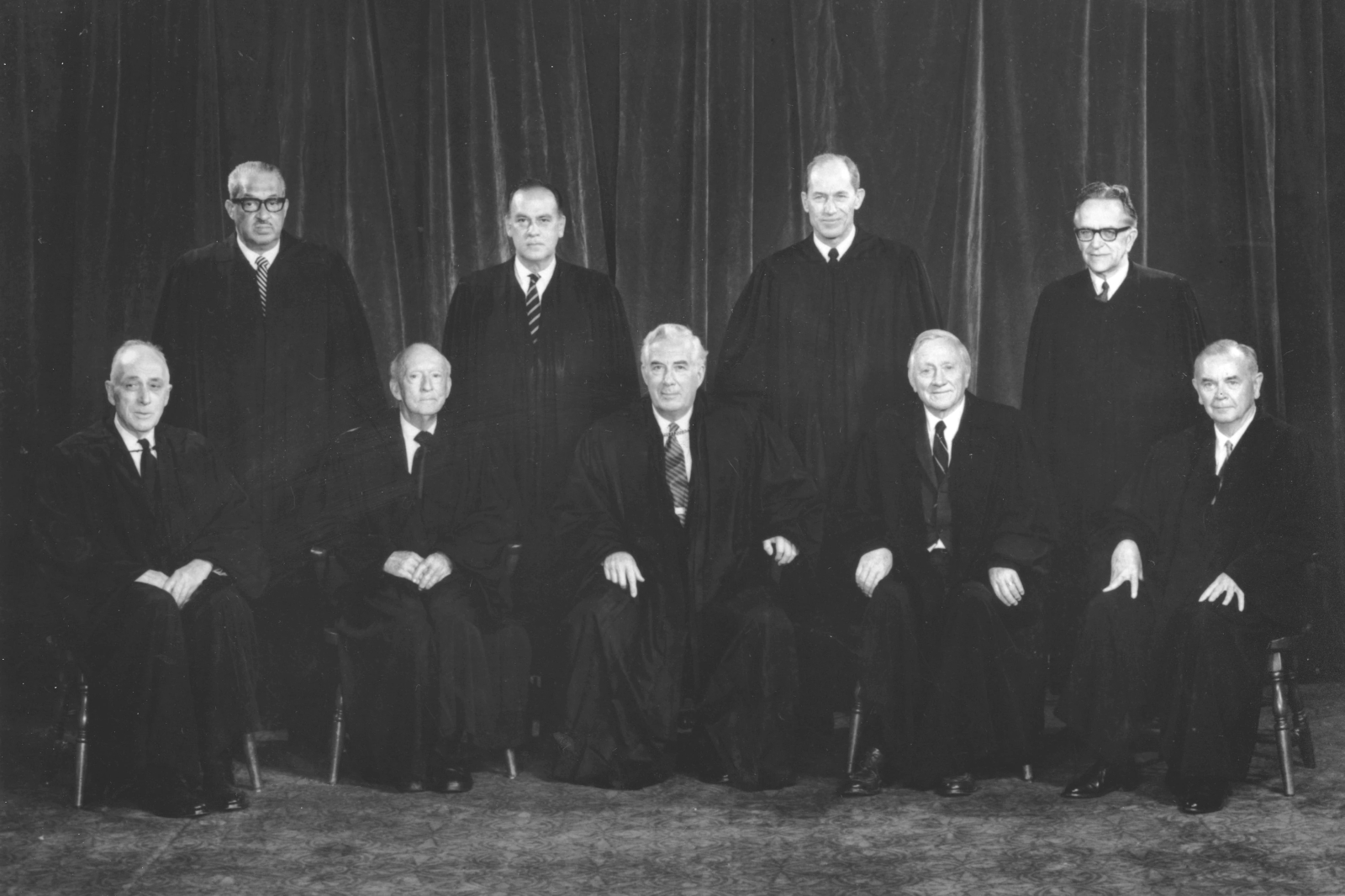
| In the famous Lemon v. Kurtzman
Case, the State of Pennsylvania was forbidden by the Supreme Court to
support non-public education of a religious nature (at that time
basically Catholic). It was permitted to support education
that served only a “secular legislative purpose,” one that prevented
“excessive government entanglement with religion.” In other
words, anything religious by way of practice must not enjoy public
support … although "study" of various religions was okay (Buddhism,
Islam, etc.) … again, as long as the study was merely "secular" in intent.
|
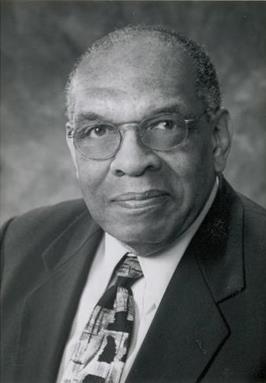
Alton Lemon (above) was named as the leading plaintiff in the suit against the Pennsylvania Superintendent of Public Instruction of Pennsylvania, David Kurtzman (below) for his (actually his Office’s) support of religious schooling.
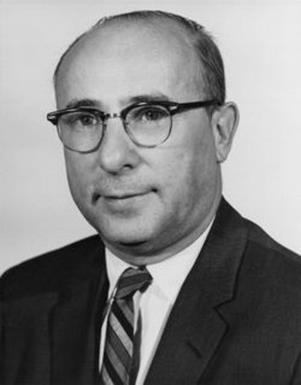
This decision in turn prompted the American Humanists in 1973 to want to rewrite their Humanist Manifesto … because the original Humanist Manifesto (1933) made it very clear
that Humanism (another word for Secularism) was clearly a "religion." Now, according to
Humanist Manifesto II, Humanism was just merely "science." "Religion" was now a term that applied only to those who believed in some kind of god.
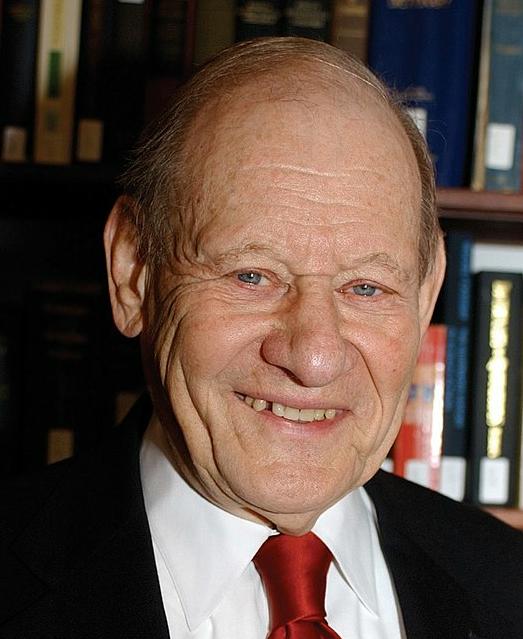
Behind this 1973 revision of the Manifesto were Paul Kurz (a Philosophy Professor at
SUNY-Buffalo) and Edwin H. Wilson (a Unitarian Minister who first helped publicize the 1933 version and then later draft the 1973 version of the Manifesto) … both editors at one time or another of the Humanist magazine.

A NATIONAL IDEOLOGICAL SHIFT TO THE LEFT |
|
By the early 1970s the story of the Puritans was
beginning to be revised ("historical revisionism" as its proponents
termed it) to read in such a way that Roger Williams and Anne
Hutchinson were the real heroes of the story, and the Puritan elders
were the authoritarian villains. This was reflective of the rising
value system that the Boomers and their young intellectual mentors in
the universities were putting in place in America. The emphasis of what
was right and good fell entirely on the way individuals personally
viewed things. The very idea of social authority itself seemed to these
basically Boomer Idealists (or Humanists) so authoritarian, so
tyrannical, so evil (like America's "imperialistic" presidents).
To this rising group of Idealistic
Humanists, America represented personal freedom, not social cohesion.
In America, right-minded individuals supposedly knew instinctively the
difference between the good and bad. And in a truly free society, the
kind that America was striving to become, there would be no need for
authoritarian authority! Authoritarianism, after all, had been the
single most dangerous threat to America since the end of World War Two.
Wasn't that, after all, what Orwell's 1984 was all about? Wasn't it just such cultural authoritarianism that Miller's highly popular literary work The Crucible
was warning the nation about? Vigilance was needed lest
authoritarianism find its way into American society in the innocent
guise of being simply good social order. Personal freedom must be
defended at all costs.
And so the Boomers gave very clear
demonstration that their childhood indoctrination had indeed succeeded
very well in shaping their development as young adults. It had
succeeded beyond all expectations!
So it was now with this rising generation
that the voice of the community was viewed as unnecessary, irrelevant,
and even oppressive. Thus long-held community standards of morality4
were to be dismissed; such things as the open sale of pornographic
literature, the living together of unwed couples, even a rather breezy
attitude toward adultery (euphemistically termed "open marriages") were
not only to be allowed, but even in some cases actively encouraged as a
sign of the new freedoms of the times. Older community standards were
viewed as archaic leftovers from the more repressive culture of the
now-vilified Puritan past.
The American "entitlement" to public nurture
So, if all Americans were invited to
become totally self-absorbed in the way they went at life, who or what
then was to look after the welfare of the entire community? The answer
was simply: "the government." That, said the Boomers, is what taxes
were for: the care and nurture of the nation by public officials, paid
professionals whose job was to lift the responsibilities of community
care from off the shoulders of the citizens, so that they could give
themselves more fully to the pursuit of their own personal happiness.
In short, the government was no longer
the American people themselves, but instead political professionals in
high places who would do the thinking and directing of American life
from above, as these more enlightened experts saw the need for
governmental action, whether congressmen, federal judges, or federal
technocrats working within the enormous (and growing even more
enormous) Washington bureaucracy.
There are a number of cultures that allow
parents to kill their children should the situation require it. In
Roman society a father could kill his son or daughter up to age seven
without any questions from the Roman public authorities. In Islamic
society a father may (or must) conduct an honor-killing of his daughter
or son, usually for transgressing a Muslim sexual taboo. But
Christianity long took the position that the killing of a child, even
an unborn child, or a child at any stage of life from the moment of
conception onward, was to commit the terrible sin of murder. Human life
was sacred and, although carried into existence by way of a woman's
womb, ultimately belonged to no one but God, for it was God that
ultimately ordained the course of a person's existence, from conception
onward.
But as the Boomers moved away from
Christian social restraints into the realm of personal sexual
"freedom," not surprisingly unwanted pregnancies exploded in number.
The simplest way to get rid of "the problem" was for the woman to
undergo an abortion. But this procedure was highly illegal throughout
the country. So, the Boomers acted to do something about this unwanted
restriction on a woman's rights to an abortion.
The critical event in the abortion controversy confronting America occurred in 1973 with the highly controversial Roe v. Wade
case. The case started out in 1970 as a challenge to Texas's
anti-abortion laws, and made its way up to the Supreme Court. In early
1973 the Court announced its decision, declaring that the many state
laws prohibiting abortion were unconstitutional because they deprived
the woman of the "right of privacy" (explaining this right through
employing an extreme logical stretch of the Fourteenth Amendment's due
process clause). The Court then laid out specific terms as to how
abortion could proceed, dividing the pregnancy period into three
separate trimesters. Each trimester allowed abortion under increasingly
restrictive standards. However people might feel about the Court's
decision (the feminists were overjoyed; Christian traditionalists
outraged) this was a classic case of judicial legislation, typical of
the times, such legislation depending entirely on the political makeup
of the Supreme Court. And everyone connected with the world of American
politics knew that.
4These
were not just idealized social norms dreamed up by intellectual social
planners, but instead time-tested rules for life, ones that had proven
themselves through long social experience as highly important for
society's success.
Counter-culturalism merely
continues to gain steam as America enters the 1970s
despite – or perhaps because
of – Nixon's leadership of the country
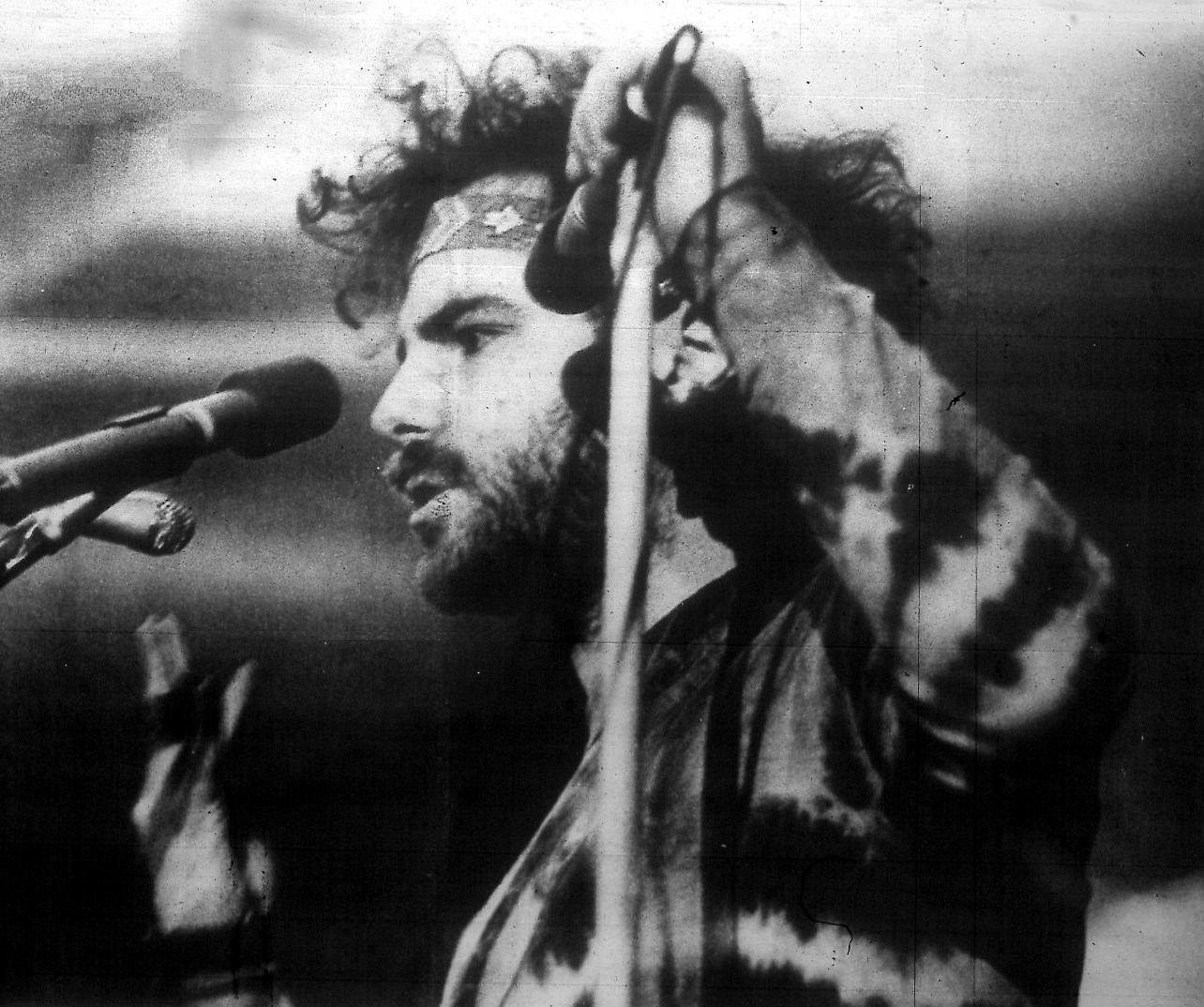
Jerry Rubin speaking at the
University at Buffalo
A whole series of anti-Establishment,
anti-Middle Class, anti-Christian America,
anti-corporate
America,
and anti-White (straight) male, surge to the front of the public eye.
It is the age of the
"victims"
of middle America to come out and protest against the traditional dominant
culture.
The wasteful use of the earth's
resources becomes another issue
by which the received American
culture is bashed by youthful protesters

Earth Day Protest Gathering
on 5th Avenue, New York – April 22, 1970
The political mood of the
times also opens up a new realm of civil rights: the American Indian
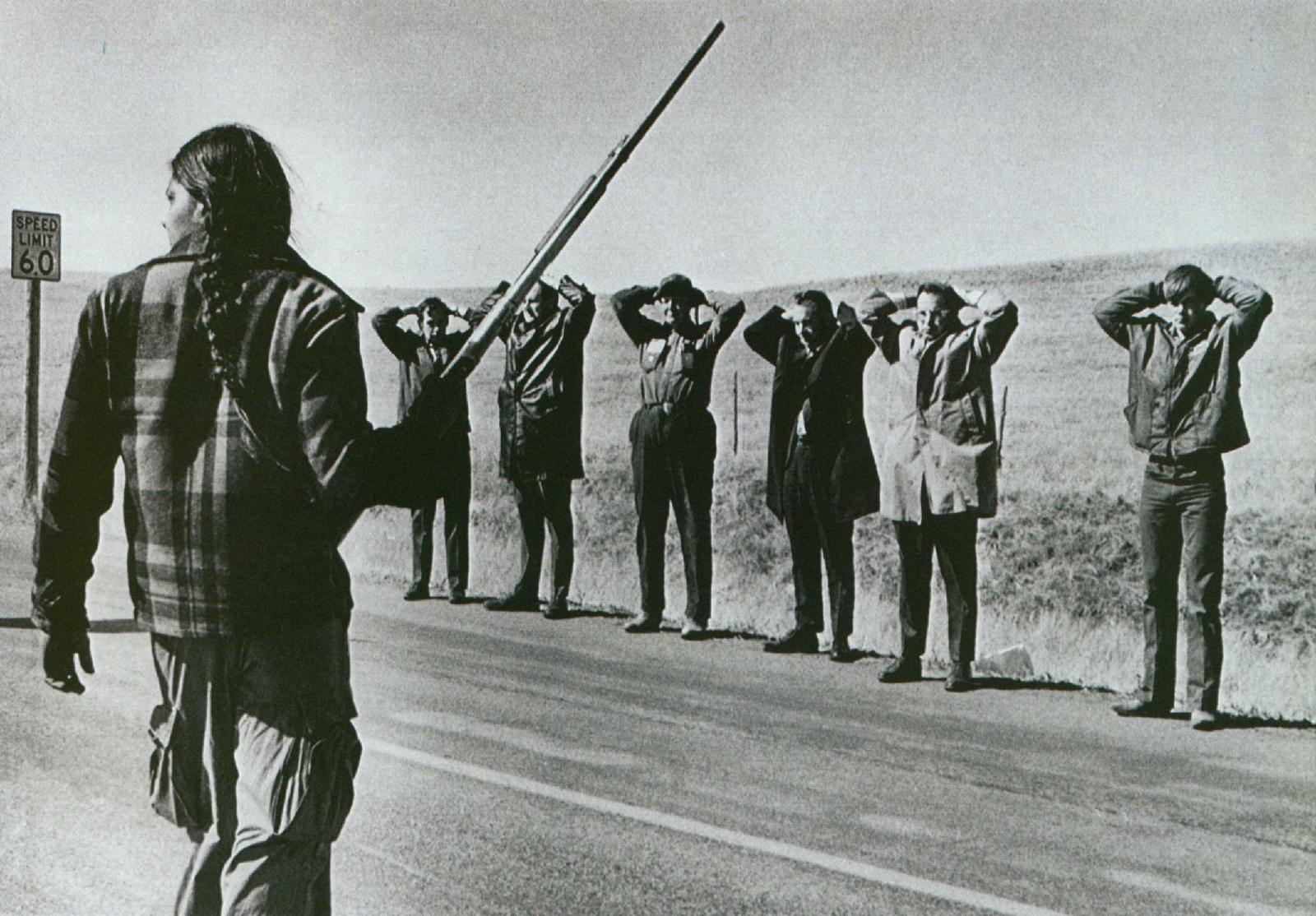
Member of the American Indian
Movement (AIM) guarding Federal officers and locals at Wounded Knee, South
Dakota – 1973
And the spirit of "America
in Revolt" is further intensified with the feminist assault on the
"chauvinism" of a male-dominated
professional world – which women now seek entry
into as a sign of their true worth (home-making
and child-raising is now viewed
as a mark of women’s oppression)

Members of the National Organization
of Women (NOW) protesting in New York City
...
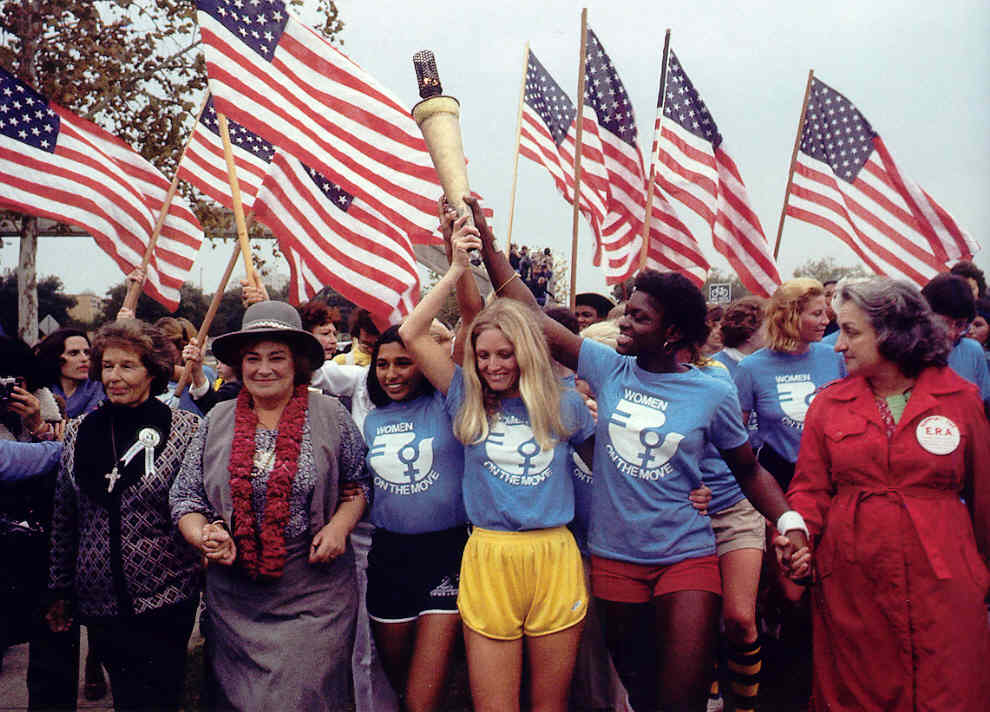
in favor of the Equal Rights
Amendment (ERA) – early 1970s
Another "victim group," the
once-shunned gays and lesbians,
slowly begin their "coming-out" in the
1970s

Gay rights demonstration
at the Democratic National Convention, New York City – 11 July 1976
Meanwhile an age-old American
issue of hostile race relations explodes in the urban North when
America's federal courts
throw their support behind the idea of forced busing of school children
in order to achieve racial
balance in all of America's schools

South Boston anger over forced
busing spills out on a Black passerby – 1974
And the revelation of the
strange outcome of the Patty Hearst kidnapping
also troubles the American
spirit. Is everyone vulnerable to
being"re-educated" or "brainwashed"? How
could the kidnapped daughter of one of America's most
famous (and rich) news publishers (the Hearst papers) join her captors in a violent attack on American
society?
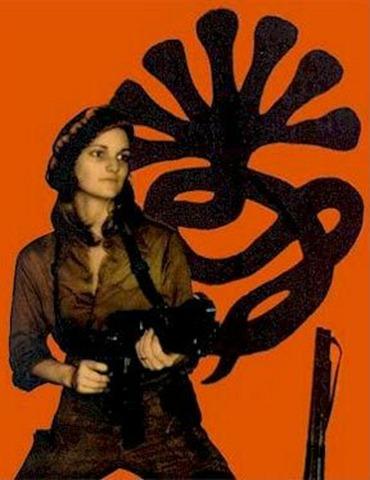
Patty Hearst as a participating
member of the Symbionese Liberation Army – spring of 1974
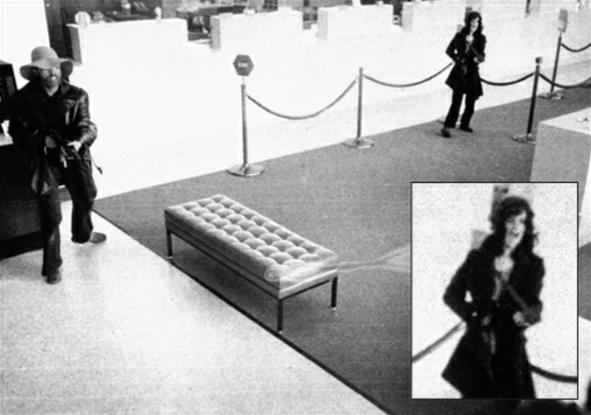
Patty Hearst caught on camera
assisting in the SLA bank robbery of a branch of the Hibernia Bank
in San
Francisco on April 15th
(only 2 1/2
months after her kidnapping).
She was finally captured
in September of the following year and sentenced to 35 years, but served
only two before President Carter commuted her sentence.
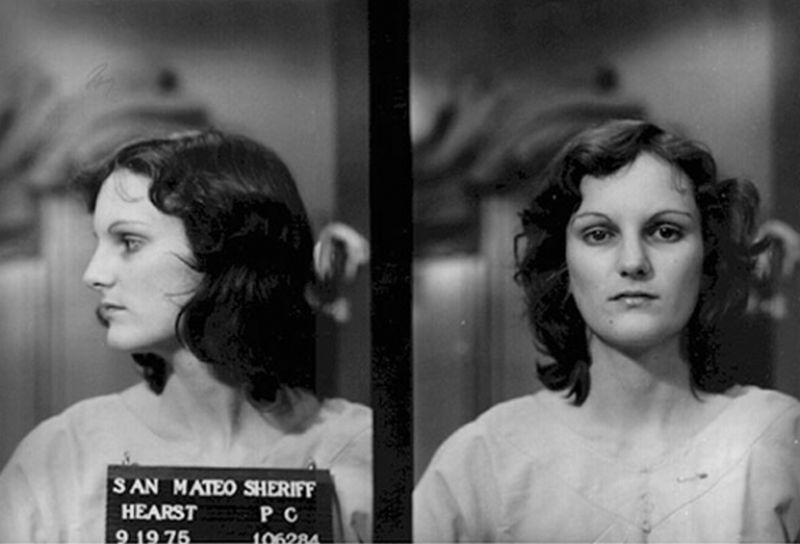
Patty Hearst's mug shot after
her arrest in September of 1975
 Miles
H. Hodges Miles
H. Hodges
| | | | |


 The assault on the American family
The assault on the American family
 Mainline Christianity in crisis
Mainline Christianity in crisis
 The Federal Judiciary continues its
The Federal Judiciary continues its An national ideological shift to the Left
An national ideological shift to the Left




















